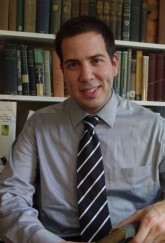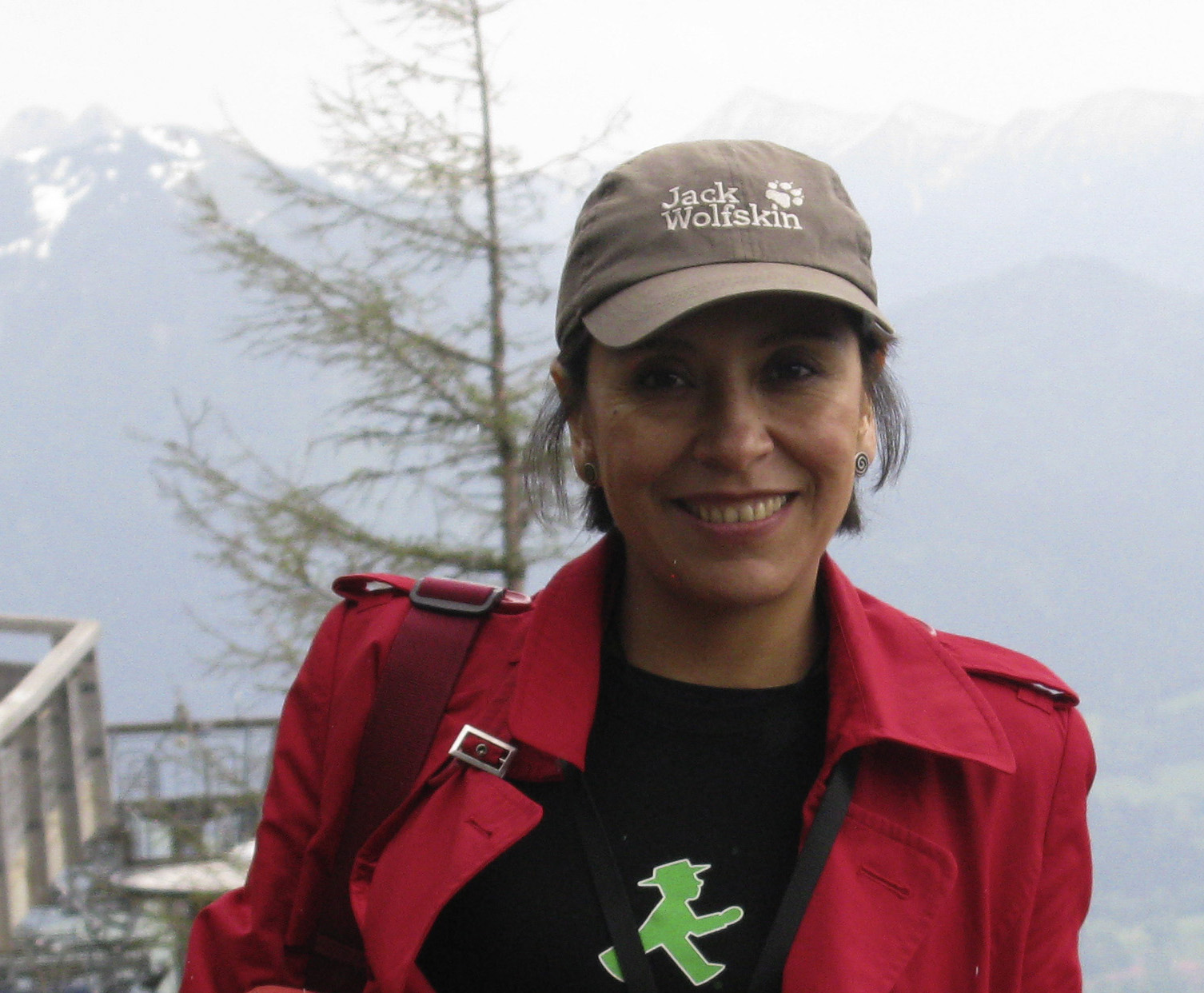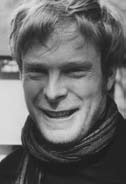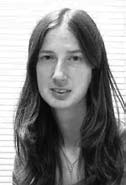Network
Table of Content
- Luis Campos (Drew University)
- Alexander von Schwerin (Technische Universität Braunschweig)
- Maria Kronfeldner (Universität Bielefeld)
- Edna Maria Suárez Díaz (Universidad Nacional Autónoma de México)
- Jonathan Harwood (University of Manchester)
- Mathias Grote (ESRC Centre for Genomics in Society, University of Exeter)
- Carlos López Beltrán (Universidad Nacional Autónoma de México)
- Vincent Ramillon (Max-Delbrück Centrum für Molekulare Medizin)
- Judith Friedman
- Jennifer Anne Marie
- Yoshio Nukaga
Luis Campos (Drew University)
____________________________________________________________________________________________

- Zoom
- Luis Campos
Postdoctoral Research Fellow
Residence: 01.10.07 - 30.09.08
Life By Design: Toward a History of Synthetic Biology
Luis Campos is currently engaged in writing a history of the newly emerging field of synthetic biology, an epistemologically provocative disciplinary mixture of engineering, computer science, molecular biology, and artificial life that seeks to redesign living systems to accomplish human-desired functions. Hopes for a "plug-and-play" biology run high, with aims for an "open source" ethos in matters of intellectual property, as synthetic biologists seek to engineer life in ways that are recognizable to engineers as engineering, rather than happenstance tinkering (which is arguably said to be the case with "so-called" genetic engineering). Having attended the first international conference, "Synthetic Biology 1.0," at MIT in June 2004, Campos has been actively following the field as it has steadily grown and internationalized over the last several years. His project concerns both the longer "prehistory" of synthetic biology--from the coining of the phrase in 1912 through widespread references to genetic engineering as a form of "synthetic biology" in the 1970s--as well as the field's current institutional and cultural dynamics.
Workshop
Making Mutations: Objects, Practices, Contexts
Alexander von Schwerin (Technische Universität Braunschweig)
____________________________________________________________________________________________
Postdoctoral Research Fellow
Residence: 01.03.04 - 31.08.04
Research Scholar
Residence: 01.11.08 - 31.03.09
Mutations, Mutagens, Mutants. Biological Things and the Analytics of Biopolitics
In the "century of the gene", mutations seemed long to be things of
secondary interest. However, genetic variation (mutation) and variants
(mutants) are at the very heart of genetic practice. Mutations and mutants
are instruments/differences that make something visible. They are
resources and became valuable commodities. No wonder that a dispositive
formed up in order to produce mutations, to detect and to organize them.
The history of mutations reveals ways in which mutations connected social
institutions, agricultrual imperatives, eugenical concerns, clinical
hopes, and industrial relations. Moreover, the history of mutations is
closely linked to mutagens: substances of transformation and “genetic
poisons” at the same time that mark a central problem of mass-consumption
society and define a trans-disciplinary problem of risk policy up to our
times. A history of these substances may reveal some hidden connections
between the science of heredity and social practices.
Workshop
Making Mutations: Objects, Practices, Contexts
Maria Kronfeldner (Universität Bielefeld)
____________________________________________________________________________________________
- Zoom
- Maria Kronfeldner
Postdoctoral Research Fellow
Residence: 01.03.06 - 30.09.08
Divide and conquer: The nature/nurture distinction in the life sciences.
Taking the nature-nurture divide as main example, the project seeks to understand the epistemic and social role of dichotomies in the production of knowledge. At issue will be the meaning, form, and function of this divide in three different contexts of the life sciences, namely anthropology, psychology, and medicine in the 19th and 20th century.
Workshop
The tenacity of the nature/nurture divide
Edna Maria Suárez Díaz (Universidad Nacional Autónoma de México)
____________________________________________________________________________________________

- Zoom
- Edna Maria Suárez Díaz
Visiting Scholar
Residence: 01.08.05 - 31.07.08
Representation and the Construction of Knowledge in Molecular Evolution.
The aim of this project was to cover the production and representation of knowledge in the field of molecular evolution, from its beginnings in th early 1960s to the rise of bioinformatics and comparative genomics in the 1990s. The analysis took place at three different levels.
At the micro-level, molecular evolution offers a place to investigate the role of experiments and techniques in different scientific traditions and tghe ways in which they are connected with specific practices of representation. The goal was to extend a previous study on the uses of nucleic acid hybridization, to cover the role of electrophoresis in theoretical population genetics, and the effects of protein and DNA sequencing on the construction of phylogenies and comparative genomics.
At the disciplinary level, the project aimed to offer an account of how the idea of informational molecules came to provide a powerful rhetoric for a new style of evolutionary studies. By developing a new vocabulary, scientists such as Emile Zuckerkandl, Walter Fitch, Roy Britten, and others helped to create a technical, social, and political frontier between the new molecular evolutionists and the "old" organismal evolutionists.
At a transdisciplinary level, as molecular evolution has been constitutive in the development of the bioinformatics revolution, the historiography of genomics must be broadened to include the role of evolutionary approaches and tools. The elaboration of the first computer programs as early as 1966 for the construction of trees based on molecular data and the first databases on proteins as early as the mid-1960s illustrate this point. The project included a study of the symbiosis between computer technology, bioinformatics, and genomics as a result of the Human Genome Project.
At all three levels, Suárez has detected important historical continuities. Such continuities arise around the study of human evolution and variation across the twentieth century. This insight has opened a wide range of collaborations with other scholars at the MPIWG and abroad.
Workshops
Writing Genomics: Historiographical Challenges for New Historical Developments
Darwin Celebration in Mexico: Darwin in Latin America, and Darwin: the Art of Doing Science
Jonathan Harwood (University of Manchester)
____________________________________________________________________________________________
Visiting Scholar
Last residence: 01.09.07 - 30.04.08
Europe’s Green Revolution: The Rise and Fall of Peasant-Friendly Plant-Breeding in Central Europe, 1890–1945
Since the 1940s various programmes for agricultural development in the ‘third world’ have been funded by Western governments and foundations. Commonly referred to as the ‘green revolution’, these programmes have generally sought to develop high-yielding cereal varieties in an attempt to alleviate hunger and poverty. Although by the 1970s enormous increases in cereals production had been achieved, however, poverty remained largely unchanged, and critics explained this outcome by arguing that the agricultural technology provided had been eagerly adopted by large commercial farmers but was ill-suited to the needs of the great majority of peasant-farmers. Since the seventies efforts have been made to develop more ‘appropriate’ technologies for the small farmer.
Against the backdrop of the transformation of continental European agriculture from the 19th century (‘Europe’s green revolution’), this history looks rather odd. For around 1900 several Central European states established plant-breeding stations whose express purpose was to raise the productivity of small farms (which constituted the large majority) by making the advantages of breeding available to peasants. Moreover preliminary evidence suggests that some of these stations had a substantial impact upon the regional agricultural economies they served.
In this book, therefore, focusing upon the stations established in three southern German states, I will consider why the stations were created, the nature of the stations’ organization and activities, the extent to which they succeeded in stimulating agricultural productivity, and the subsequent decline in their autonomy and influence under National Socialism. Finally I will return to the present, asking whether early green revolution programmes were aware of the previous European model and if so, why they seem not to have drawn upon it. And in view of recent claims that agricultural biotechnology is paving the way for a ‘second green revolution,’ I will assess how much has been learned from previous experience.
Workshop
History of Plant-Breeding since 1880
Mathias Grote (ESRC Centre for Genomics in Society, University of Exeter)
____________________________________________________________________________________________

- Zoom
- Mathias Grote
Postdoctoral Research Fellow
Residence: 01.01.09 - 31.12.09
Curent research project: Microbial rhodopsin research in translation: Discovery, laboratory models and innovative applications
Translation is often interpreted as the shift of a scientific object into the social realm of application. In this project, we will investigate the dimensions and implications of translation processes, as phenomena move from ‘nature’ to the laboratory to useful invention. We suggest that translation will not be appropriately understood if it is understood serially, and if it is confined to the movement from scientific sphere to social use. Our focus will be two major periods of discovery and research development on microbial rhodopsins: in the 1970s and in the early 2000s. We will examine the ways in which both types of microbial rhodopsin (bacteriorhodopsin and proteorhodopsin) were discovered, how they became laboratory exemplars, and what this exemplar status has meant for application and further research. These investigations will go to the heart of scientific practice, the ways in which laboratory phenomena are constructed, and the role anticipated applications have in discovery and exemplar-forming activities. As well, we will examine the relationships between two very different periods of the molecular life sciences: the first phase of publications on bacteriorhodopsin around 1970, and the postgenomic phase, in which the second microbial rhodopsin story is located.
Workshop
Membranes, Surfaces and Boundaries: interstices in the history of science, technology and culture (7.-9. Oktober 2010) at the Max-Planck-Institute for the History of Science.
Carlos López Beltrán (Universidad Nacional Autónoma de México)
____________________________________________________________________________________________
- Zoom
- Carlos López Beltrán
Visiting Scholar
Residence: 01.11.02 - 31.01.03 and 01.10.06 - 31.03.07
The Influence of Biological and Medical Theories in Racial Classification of Humans
Workshop
The tenacity of the nature/nurture divide
Vincent Ramillon (Max-Delbrück Centrum für Molekulare Medizin)
____________________________________________________________________________________________

- Zoom
- Vincent Ramillon
Postdoctoral Research Fellow
Residence: 01.11.06 - 31.10.08
Norms and Practices in Genomic Research, ca. 1985 - 2003
This project seeks a better understanding of genomics from a historical perspective. Focusing on the material practices of this field of research, it attempts to articulate their evolution with reference to the transformations of the social and epistemic norms regulating biomedical activities during the late-twentieth century.
The history of genomics is characterized by the progressive differentiation of a managerial rationality and associated governmental practices in the institutions involved in genome mapping and sequencing or related technological and resource developments. The introduction of these managerial practices into the laboratories has led to various negotiations affecting the social, technical, and epistemic dimensions of sequencing. The use of Expressed Sequencing Tags to create gene indexes, one of the most important applications of sequencing techniques in the 1990s, originated in the use of automata and the subsequent re-organization of sequencing procedures. The same concerns led to the emergence of factory-like production centers and to networks of laboratories as the two archetypal organizational models in genomic projects.
Moreover, this managerial rationality constituted a shared language between scientific and non-scientific institutions that proved instrumental in fostering the development of companies whose business model was based primarily on the mass production of sequences. Finally, the transfer of mass production practices from sequencing to other experimental procedures has played a critical role in the experimental and theoretical reconfigurations of molecular genetics during the second half of the 1990s, known first as the "post-genomic" and "functional genomic" turn, later theorized under the unifying label of "systems biology."
Workshop
Writing Genomics: Historiographical Challenges for New Historical Developments
Judith Friedman
____________________________________________________________________________________________
Postdoctoral Research Fellow
Residence: 01.05.2010 - 31.08.2010
An analysis of locational and professional diversity in the study of anticipation in hereditary disease in Western Europe 1900-1950
The history of the concept of anticipation in hereditary disease, the notion that certain hereditary illnesses strike earlier and often more harshly in succeeding generations, reveals that acceptable approaches to heredity varied widely over time and place during the first half of the 20th century and that social concerns as well as scientific and medical concepts played an important role in such approaches. This project will examine the significant regional and professional variations in the reception and utilization of the concept of anticipation in the study of hereditary disease in Western Europe from 1900 to 1950.
Jennifer Anne Marie
____________________________________________________________________________________________

- Zoom
- Jennifer Marie
Postdoctoral Research Fellow
Residence: 01.04.2004 - 30.09.2005
Gardening, Fancying and Heredity
My project investigates the relationship between geneticists in early 20th century Europe, animal fanciers (who bred animals to prescribed standards for exhibition purposes) and gardeners.
The relationship between geneticists and fanciers has been little studied. What work has been done suggests that geneticists obtained animals for their research and information about their husbandry from animal fanciers. My project began by investigating the significance of this. What information was embedded in the animals that passed between these two groups of people? Initial findings suggest that the knowledge related to issues of purity and was not always accurate. In investigating this, the project quickly broadened to look at the extent to which geneticists and fanciers shared a common culture, and how this affected the work of the geneticists. Initial findings suggest that the worlds of genetics, fancying and agriculture shared common societies, conferences, journals, people and ideas.
The relationship between geneticists and gardeners has been equally little studied. Yet, horticulture formed a very important context for genetics since William Bateson directed the John Innes Horticultural Institution between 1910 and 1926. Botanical gardens across Europe connected gardening to botany and placed genetics in this context. Fruit growers connected gardening to agriculture. This suggests that plant genetics also existed in the shared context of science, agriculture and leisure. The question of what knowledge gardeners embedded in the plants they grew for geneticists remains to be investigated.
Yoshio Nukaga
____________________________________________________________________________________________

- Zoom
- picture follows
Postdoctoral Research Fellow
Residence: 01.10.2002 - 30.09.2003
 Heredity
Heredity